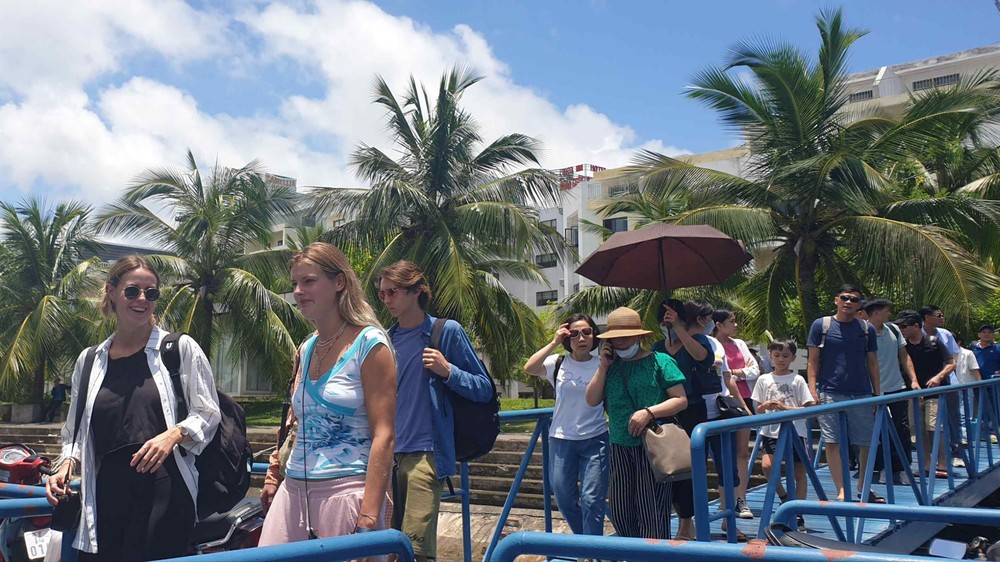Cheap tourist products have a significant impact on boosting travel demand, but they must be based on the needs of tourists and the interests of service providers.
However, at this time, when tourism has positive signs of recovery, cheap travel products are no longer a priority for both tourists and travel companies.
Budget tours are not suggested

According to Chairman of the Vietnam Tourism Association Vu The Binh, previously, travel firms often offered discounts of 10 percent – 20 percent or 30 percent – 50 percent for domestic tours and up to 70 percent for international trips. Although many promotional programs have been launched to attract travelers, the Vietnam Tourism Association and tourist companies do not support these promotions.
In tourism, the quality of products and services is the most important thing. If all tourists are attracted by cheap tours, it will repeat the situation of ‘zero-dong’ tourism that the tourism industry is trying to eliminate. Therefore, the level of promotion depends on travel companies and the tourism seasonality. In 2024, the Vietnam Tourism Association will not promote cheap tours and promotional programs and will focus on attracting international visitors, strengthening exchange and cooperation activities, and building sustainable tourism. Tourism does not need quantity but quality travelers, Mr. Binh emphasized.
The Vietnam International Travel Mart (VITM) 2024 which is scheduled to take place in Hanoi from April 11-14 is considered as an opportunity to look for cheap tours. However, promotional programs with discounts of up to 40 percent to -50 percent will not be presented at this year’s travel show.
Experts said that tourism should not promote low prices but instead encourage businesses to enhance service quality and provide more attractive experiences to tourists. Types of cheap tourism with low quality should be closely monitored to prevent price undercutting, unhealthy competition, and unfair practices.
According to Mr. Nguyen Cong Hoan, Deputy General Director of Flamingo Holding Group, it needs to improve service quality and identify products that can attract international visitors, such as cuisine, entertainment, festivals, healthcare, and shopping, along with new and attractive elements. Businesses must coordinate for mutual development and ensure a healthy tourism environment to draw high-end tourist flows.
Tourists decide to travel by other means of transport due to high airfare prices
According to the Vietnam Tourism Association, high airfare price is also a challenge for domestic tourism development. Travel companies said that prices of tours increased due to the significant growth in airfare, which accounted for from 50 percent to 60 percent of the tour price. Many groups of tourists decide to travel by land, train, or individual vehicles, or choose international tours.
Ms. Vu Bich Hue, a representative of the Flamingo Redtours said that the Hanoi-Buon Ma Thuot four day-three night tour was priced at VND6-7 million (US$240 – US$280) per person in March and has risen to VND7.1 million per person in April. Meanwhile, a five-day trip to Laos and Thailand costs VND7.4 million per person and to China is estimated at VND9.44 million per person.
On the occasion of National Reunification Day, Saigontourist is interested in promoting combo products that have accounted for 30 percent of the company’s package tour products this year, said a Saigontourist representative.
Some travel companies offer many flexible solutions for tourists to have reasonable prices and quality holidays.
According to the General Statistics Office of Vietnam (GSO), nearly 1.6 million foreign tourists traveled to Vietnam in March.
The country welcomed over 4.6 million foreign tourist arrivals in the first quarter of this year, up 72 percent year-on-year, and 3.2 percent compared to the figure recorded in the same period of 2019 before the Covid-19 outbreak.
The Chinese market continues to recover positively, reaching 352,000 visits in March, up 19 percent over the previous month. Countries enjoying unilateral visa exemption policies have grown strongly, such as Belgium, France, and Italy.
By Mai An – Translated by Kim Khanh










